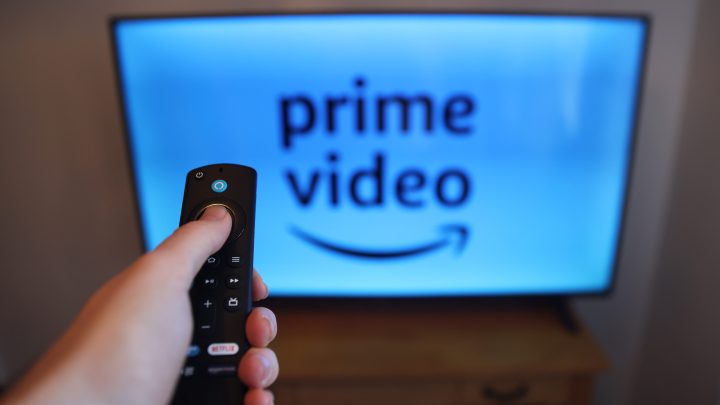
Where is the hypercompetitive streaming business headed?

Millions of Americans will tune into a live broadcast on an old-guard television network this weekend. Of course, we’re talking about the Super Bowl on CBS. Live sports are one of the last things still drawing viewers to traditional TV in big numbers, as more of us do our movie- and show-watching online. But the hypercompetitive, and arguably oversaturated, streaming sector isn’t doing so hot either.
New subscribers are tough to come by. Most services still aren’t turning a profit. And today’s decentralized landscape has consumers longing for simpler days when they could stream all their favorite shows on just one or two platforms for less than $15 a month.
But Netflix and Hulu were offering those cheap subscriptions and big content libraries at a pretty steep loss, according to Eleanor Patterson, a professor of media studies at Auburn University.
“That’s the Silicon Valley model, to first focus on getting scale and then worry about profitability later,” Patterson said.
That model didn’t factor in more competition. And before long, Big Tech and legacy media companies got in on the action. Amazon Prime Video went global in 2016. Soon after, Disney, HBO, Peacock and Paramount launched streaming arms.
“And when they started their own services, they’re like, ‘I’m gonna take back all of my [intellectual property],’” Patterson said.
Popular shows were spread out among platforms, so viewers started needing four or five subscriptions to watch them all. Streamers started jacking up subscription prices, in part to push consumers to cheaper, ad-supported tiers as they try to claw their way to profitability. Still, many of our monthly streaming bills are getting closer to the cost of the cable bundles we ditched a decade ago.
“It’s a big, big mess, is what I’m trying to say,” Patterson said.
And not just for viewers. “The business has been through the wringer over the past three to four years,” said J. Christopher Hamilton, a professor of television, radio and film at Syracuse University and an entertainment attorney.
In addition to its revenue challenges, Hamilton said, the streaming sector is recalibrating after a pandemic boom-and-bust cycle and the 2023 Hollywood strikes.
“One of the things we’ve come out of this learning is there’s no escaping consumers wanting their cake and eating it too,” he said.
Streamers have to figure out how to keep delivering popular shows at a price we can stomach, which is tough in such a crowded field.
“But if you listen to what these CEOs are talking about, I think we’re going to see a much, more condensed media space,” Hamilton said. A few years down the road, “it very well might end up being just three major players.”
Sounds a lot like the old days of TV. Speaking of which, Brandon Katz with Parrot Analytics says we should expect ad-volumes on streamers to keep growing.
“With pricing pressure, [streamers] are going to continue to try to convert as many people to the ad tier as possible,” Katz said.
On the content front, he predicts a “creative dumbing down” in the coming years. During that growth-at-all-costs era, he said lots of high-brow, artistically daring shows (think “Fleabag”) got the green light.
“Peak TV has well and truly peaked,” Katz said. “From a programming standpoint, it’s very much a race to the middle. Everyone is looking for that broad-appeal commercial fare.”
Because it turns out, most of us just want to watch hokey sitcoms and old network dramas on a loop. According to a recent analysis by Nielsen, Universal’s 2011 legal drama “Suits” was the most streamed show of 2023. “NCIS,” “Grey’s Anatomy” and “The Big Bang Theory” also topped the list and handily beat out the most viewed streaming original, “Ted Lasso.”
“My students, I ask them what their favorite show is, and they’re like ‘Friends,’ ‘Seinfeld,’” Patterson said. Streamers “are like parasites that have killed off the outlets that made these shows and now don’t know how to make their own version.”
Patterson said it’s telling that streaming services’ most popular commodities are decades-old network shows, and that so many of us are grumpy about how decentralized streaming has become but there’s no TV Guide telling us what to watch.
“People want that all-in-one box. They want that all-in-one magic stick that just has everything. And I bet people would pay 100 bucks a month for that,” she said.
Streaming is killing off the competition and also becoming it. Maybe that’s what we all want.
There’s a lot happening in the world. Through it all, Marketplace is here for you.
You rely on Marketplace to break down the world’s events and tell you how it affects you in a fact-based, approachable way. We rely on your financial support to keep making that possible.
Your donation today powers the independent journalism that you rely on. For just $5/month, you can help sustain Marketplace so we can keep reporting on the things that matter to you.

















